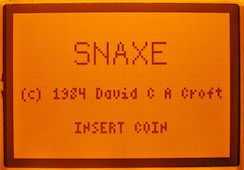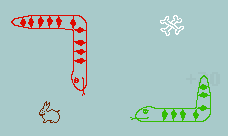Cisco routers with German VDSL2
- Read more about Cisco routers with German VDSL2
- 1 comment
- Log in or register to post comments
Customers wishing to use their own router with VDSL2 (FTTC) services in Germany are hampered by the CPE not supporting PPPoE passthrough, as Telekom limits the line to 1 PPPoE session. The CPE therefore needs to be replaced entirely. This article describes how to extract the login information from an O2 Homebox and then configure a Cisco router as a replacement CPE.
 Since I just got my lovely (and cheap)
Since I just got my lovely (and cheap)  This is a simple multiplayer version of the classic Snake game, developed in 16 hours for the Überall video game party. It features network play, with mobile phone or laptop controllers, for 2-8 players per game. It can also be played with up to 4 players on the local keyboard, or with a combination of both network and local players.
This is a simple multiplayer version of the classic Snake game, developed in 16 hours for the Überall video game party. It features network play, with mobile phone or laptop controllers, for 2-8 players per game. It can also be played with up to 4 players on the local keyboard, or with a combination of both network and local players.